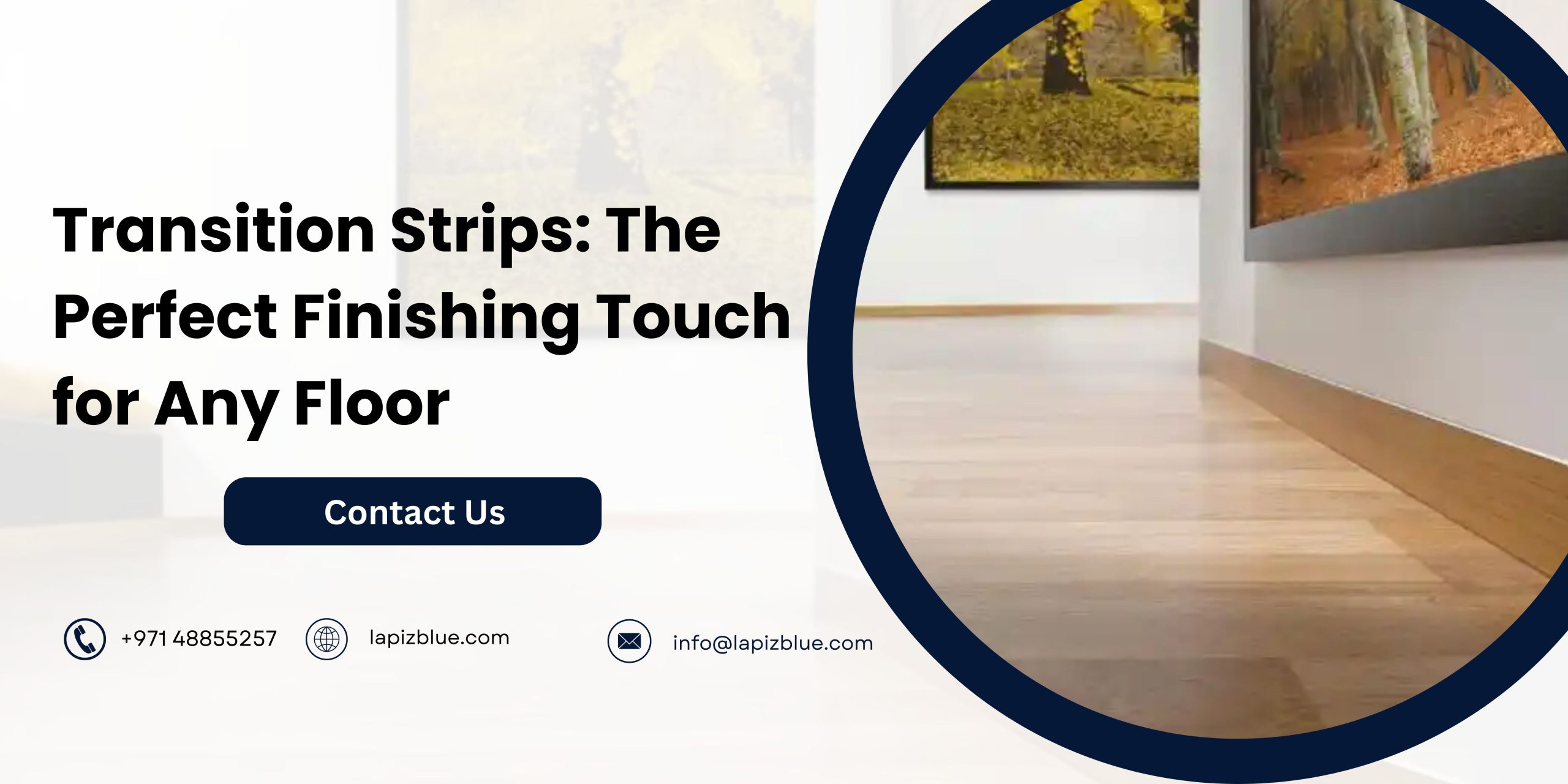Transition strips might not be the most obvious part of home design, but their impact on both function and aesthetics is significant. These strips are small but essential components that bridge the gap between different types of flooring, ensuring a smooth, safe transition. Whether you’re a homeowner or an interior designer, understanding the importance of transition strips can elevate any flooring project.
What Are Transition Strips and Why Are They Important?
Transition strips are narrow, often subtle pieces of material used to connect different flooring surfaces. They play a crucial role in ensuring that floors of different types, like carpet and tile or hardwood and laminate, meet seamlessly. Without them, your floor could appear fragmented, and in some cases, present tripping hazards. These are especially helpful in open-plan designs or areas with high foot traffic.
Types of Transition Strips and Their Uses
When it comes to transition strips, there’s no one-size-fits-all. Different types are designed for specific flooring transitions. Here are some of the most common types and their uses:
1. T-Molding Transition Strips
These are used for floors that are of the same height. Their “T” shape slots between the flooring types, providing a flush and clean transition.
2. Reducer Transition Strips
If your floors have different heights, a reducer transition strip is ideal. It gradually tapers down from one surface to another, making it perfect for transitioning from thicker hardwood to thinner vinyl or tile.
3. End Cap Transition Strips
Used at doorways or edges of rooms, end cap transition strips offer a neat, finished look, connecting flooring to walls or other boundaries.
4. Carpet Transition Strips
These strips are specifically designed to join carpeted floors with hard surfaces, ensuring that the carpet edges don’t fray and the transition is smooth.
5. Stair Nose Transition Strips
When flooring meets a staircase, stair nose strips round off the edges, preventing damage and creating a safer transition between floor and stair.
Choosing the Right Material
The material you choose for your transition strips is just as important as the type. Materials range from wood to metal, vinyl, and stone, each offering durability and aesthetic appeal. Here’s a look at the most common materials:
-
Wood: Best for matching hardwood floors and creating a natural look.
-
Metal: Ideal for modern, sleek designs and commercial spaces.
-
Vinyl: A cost-effective, versatile option that’s easy to install and maintain.
-
Stone: Used for high-end, elegant transitions in areas with tile or stone floors.
Selecting the material that complements both your flooring and the style of your home ensures a polished, unified look.
Installing Transition Strips: A Step-by-Step Guide
1. Measure the Space
Accurate measurements are crucial to ensure the transition strip fits perfectly between the two flooring types.
2. Cut the Transition Strip
Use the appropriate tools for your chosen material. For wood, a miter saw works well, while metal and vinyl may need a hacksaw or utility knife.
3. Prepare the Surface
Clean the area where the transition strip will be installed to remove any dirt or debris.
4. Install the Strip
Depending on the type of transition strip, you may need adhesive, nails, or screws for installation.
5. Seal the Strip
If you’re using wood transition strips, apply a sealant to protect them from moisture, especially in bathrooms or kitchens.
Common Mistakes to Avoid
1. Ignoring Height Differences
Using the wrong transition strip for uneven flooring heights can lead to an uneven transition and potential tripping hazards. Always select a strip designed for height differences.
2. Choosing the Wrong Material
The material of the transition strip should match the flooring and the overall design of your space. Failing to do so can lead to a mismatch in texture or color.
3. Rushing Installation
Take your time during installation. Misaligned or improperly secured transition strips can compromise the look and safety of the flooring.
4. Overlooking Durability
Not all transition strips are made equal. In high-traffic areas, choose durable materials like metal or stone to ensure longevity.
Maintaining Transition Strips for Longevity
After installation, these strips require minimal maintenance. Keep them clean by vacuuming around them regularly and wiping down the surface. For wooden strips, apply a wood sealant to protect against moisture and wear. Metal strips may require periodic polishing to maintain their shine, while vinyl strips can be easily cleaned with a mild detergent.
How Transition Strips Enhance Your Home’s Safety and Aesthetic Appeal ?
Transition strips provide both safety and visual benefits. They smooth the transition between different flooring types, which helps prevent tripping. They also help create a cohesive look in the room by connecting different flooring materials in a subtle, seamless way. By choosing the right transition strip, you can enhance the beauty of your floors while ensuring safety, particularly in areas with high foot traffic.
Conclusion
Transition strips may seem like minor details, but they play a pivotal role in creating functional, cohesive, and safe flooring transitions in any home. From improving aesthetics to enhancing safety and durability, Its an essential part of any flooring project. Whether you’re a DIY enthusiast or working with a professional, understanding the types, materials, and installation methods of transition strips can make a noticeable difference in your home’s appearance and function. When done correctly, It can be the unsung heroes of your interior design, adding that final touch to make your spaces look polished and complete.
For premium transition strips that elevate your space with durability and style, explore Lapizblue’s expertly crafted solutions. Visit Lapizblue today to discover products tailored for lasting quality and elegance.


